During the War
The Army Air Forces
-
The prewar Army Air Corps was more vehement than most of the services in their opinion of African American inferiority. The Air Corps was adamant that blacks could not serve as combat pilots. However, bowing to a presidential decree in 1941, the Air Corps began training a limited number of pilots at Tuskegee, Alabama. Later known as the Tuskegee Airmen, they became one of the most recognizable symbols of African American participation in World War II.
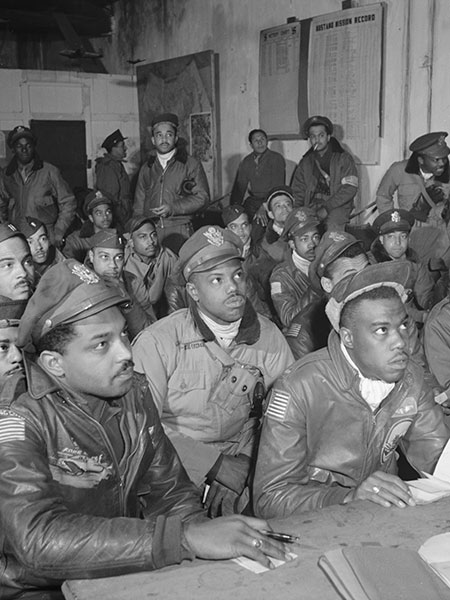 Tuskegee Airmen image caption: Members of the 332nd Fighter Group attend a briefing at their airbase in Ramitelli, Italy, in 1945. Library of Congress, LC-F9-02-4503-319-07
Tuskegee Airmen image caption: Members of the 332nd Fighter Group attend a briefing at their airbase in Ramitelli, Italy, in 1945. Library of Congress, LC-F9-02-4503-319-07 Tuskegee Airmen image caption: Members of the 332nd Fighter Group attend a briefing at their airbase in Ramitelli, Italy, in 1945. Library of Congress, LC-F9-02-4503-319-07
Tuskegee Airmen image caption: Members of the 332nd Fighter Group attend a briefing at their airbase in Ramitelli, Italy, in 1945. Library of Congress, LC-F9-02-4503-319-07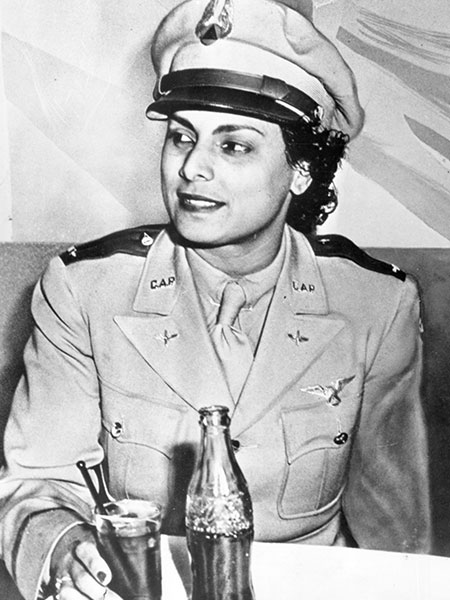 Second Lieutenant Willa Beatrice Brown, the first black woman commissioned in the Civil Air Patrol, trained Army Air Forces pilots during the war. National Archives, 208-FS-793-1.
Second Lieutenant Willa Beatrice Brown, the first black woman commissioned in the Civil Air Patrol, trained Army Air Forces pilots during the war. National Archives, 208-FS-793-1. Second Lieutenant Willa Beatrice Brown, the first black woman commissioned in the Civil Air Patrol, trained Army Air Forces pilots during the war. National Archives, 208-FS-793-1.
Second Lieutenant Willa Beatrice Brown, the first black woman commissioned in the Civil Air Patrol, trained Army Air Forces pilots during the war. National Archives, 208-FS-793-1.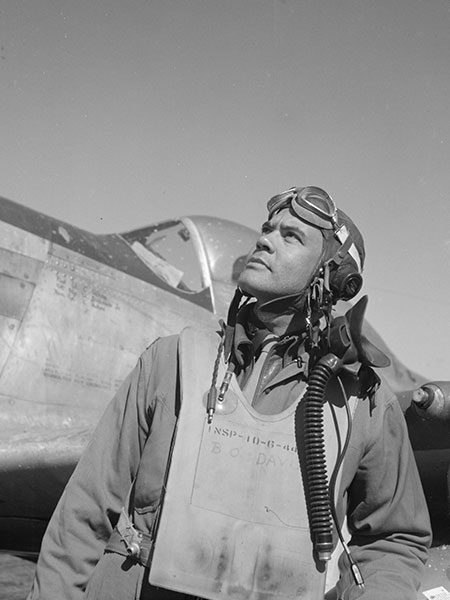 Colonel Benjamin O. Davis, Jr., commander of the 332nd Fighter Group, stands in front of his P-51D Mustang at Ramitelli, Italy, in March 1945. Library of Congress, LC-DIG-ppmsca-11758.
Colonel Benjamin O. Davis, Jr., commander of the 332nd Fighter Group, stands in front of his P-51D Mustang at Ramitelli, Italy, in March 1945. Library of Congress, LC-DIG-ppmsca-11758. Colonel Benjamin O. Davis, Jr., commander of the 332nd Fighter Group, stands in front of his P-51D Mustang at Ramitelli, Italy, in March 1945. Library of Congress, LC-DIG-ppmsca-11758.
Colonel Benjamin O. Davis, Jr., commander of the 332nd Fighter Group, stands in front of his P-51D Mustang at Ramitelli, Italy, in March 1945. Library of Congress, LC-DIG-ppmsca-11758. -
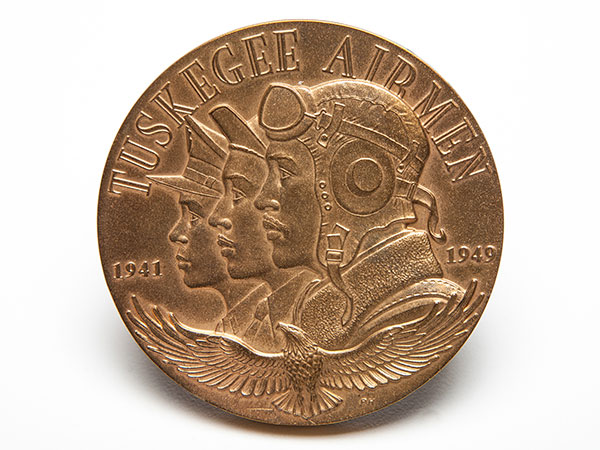 Replica Tuskegee Airmen Congressional Gold Medal
Replica Tuskegee Airmen Congressional Gold Medal
In 2006, Congress voted to award its highest honor to the Tuskegee Airmen for their service during World War II. The reverse of the medal shows a P-40 Warhawk, P-51 Mustang, and B-25 Mitchell, the three types of aircraft flown by the Tuskegee Airmen. From the Collection of The National WWII Museum. Gift of Dr. Daniel L. Haulman, 2014.345.001 -
Thousands more African Americans served in the Army Air Forces, most as part of engineer aviation battalions. In all, World War II saw 48 of these segregated battalions, which received less intense training than white battalions and were frequently assigned menial maintenance tasks instead of their intended role: constructing airfields. Just seven black aviation battalions were sent to build airfields in the European theater. The rest conducted all types of engineering duties in the Pacific and China-Burma-India theaters, where black troops were instrumental in the construction of the Ledo Road.
-
Captain Roscoe Brown described his service as the commanding officer of the 100 332nd and his shooting down of a German ME-262 jet fighter. From the Collection of The National WWII Museum.
-
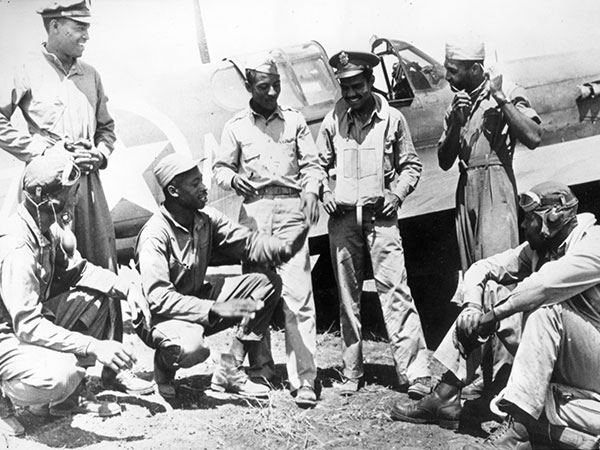 These pilots of the 99th Fighter Squadron shot down 8 of the 28 German planes downed over the Anzio beachhead on January 27, 1944. National Archives, 208-MO-18H-22051.
These pilots of the 99th Fighter Squadron shot down 8 of the 28 German planes downed over the Anzio beachhead on January 27, 1944. National Archives, 208-MO-18H-22051. -
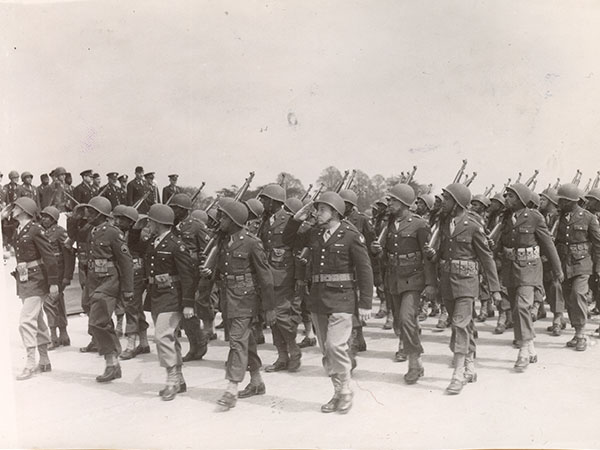 Members of one of the 48 black engineer aviation battalions parade across an airfield they constructed. National Archives, 80-G-337464.
Members of one of the 48 black engineer aviation battalions parade across an airfield they constructed. National Archives, 80-G-337464.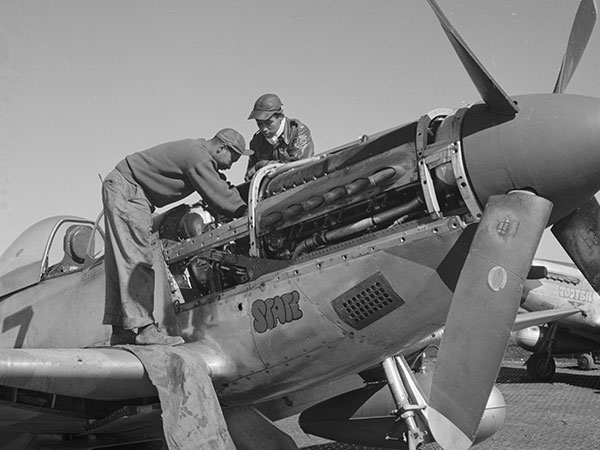 P-51 image caption: Captain Roscoe Brown (right) and his crew chief work on Brown’s P-51D Mustang Bunnie. Library of Congress, LC-DIG-ppmsca-13258
P-51 image caption: Captain Roscoe Brown (right) and his crew chief work on Brown’s P-51D Mustang Bunnie. Library of Congress, LC-DIG-ppmsca-13258 -
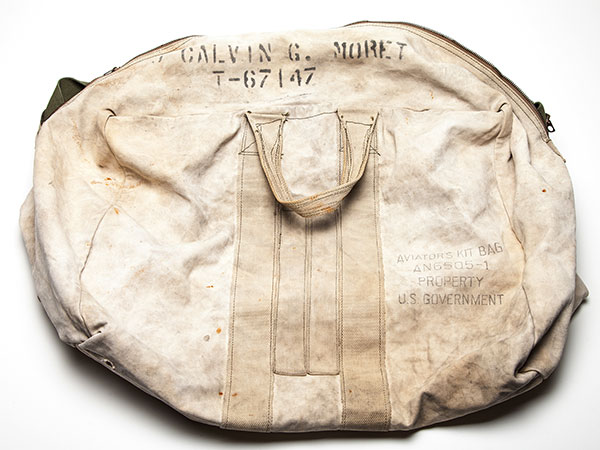 Calvin Moret’s Aviator Bag
Calvin Moret’s Aviator Bag
Calvin Moret used this kit bag to carry his parachute from the issue room to his aircraft while training at Tuskegee, Alabama. He completed his advanced training in P-51 Mustangs and was preparing to ship overseas when Germany surrendered in May 1945. Moret, Louisiana’s last Tuskegee Airman, passed away on September 11, 2015. From the Collection of The National WWII Museum. Gift of Calvin Moret, 2001.007.001




